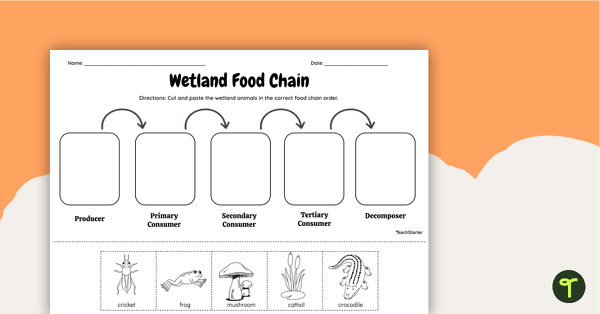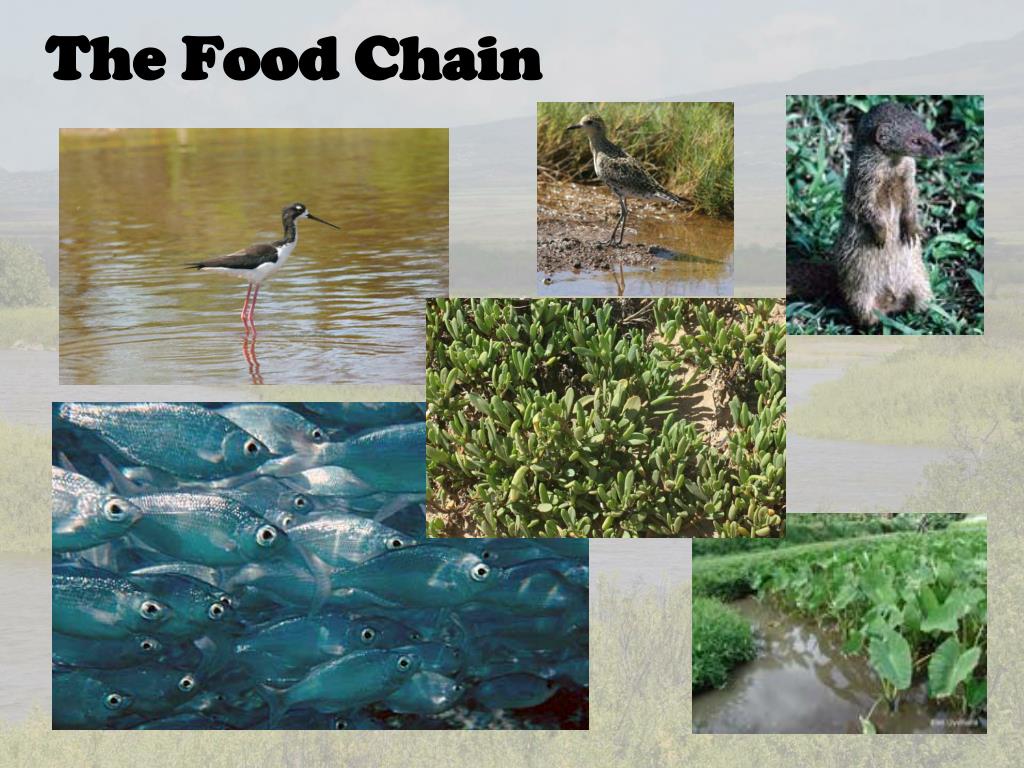Wetlands Food Chains and Food Webs Biology Diagrams Food chain: a series of living things that are dependent on the next as a source of food List some wetland plants and animals in the box below: Now list the words from above in the spaces below to make your own food chain: Wetland Food Chains, continued on page 4 Wetland Food Chains, continued from page 3 Vocabulary to know: n Wetland Food Web Put on your boots or sneakers, grab an adult, and head to the nearest pond, stream, lake, river, swamp, or marsh. Look closely and you'll discover a diverse community of plants and animals connected in what is known as a food web. Food webs are made up of lots of food chains. Here is an example of a simple food chain: Plant Snail Fish Bird Food chains and food webs show how Wetlands Exhibit (Teacher's Edition): -Food web/ food chain: Students will come to Sea Center Texas' wetland exhibit and observe the various organisms present. Once the organisms are identified they will be used to create a food web. A discussion will be conducted about the food web and how the organisms are inter-dependent.

The "Wetlands" unit includes three activities that are designed to promote an understanding of the transfer of nutrients and energy through food chains and food webs. Students recognize the interdependence of all living things by this comparison. The activities illustrate the basic ecological components of a wetland ecosystem, their relationship via food chains, and finally the flow and loss Procedure Read the background material aloud in class. It may be helpful to draw an example of a food chain or food web on the board, and to make a diagram with producers on the bottom, with the primary consumers above them, the secondary consumers above the primary consumers, and so on. Make food web cards (from the list below) on large index

PDF LeSSON 1 The Wetland ecosystem Biology Diagrams
A wetland food chain is a diagram that shows the flow of energy through different species in a linear direction. Food chains are divided into layers called trophic levels.

In the Lake Ontario food chain, shown in figure 6.1.1.4.g 6.1.1.4. g, the Chinook salmon is the apex consumer at the top of this food chain. Some communities have additional trophic levels (quaternary consumers, fifth order consumers, etc.). Finally, detritivores and decomposers break down dead and decaying organisms from any trophic level. Explore the intricacies of wetland food webs, uncovering the dynamics that sustain biodiversity and ecosystem health in vital wetlands.
